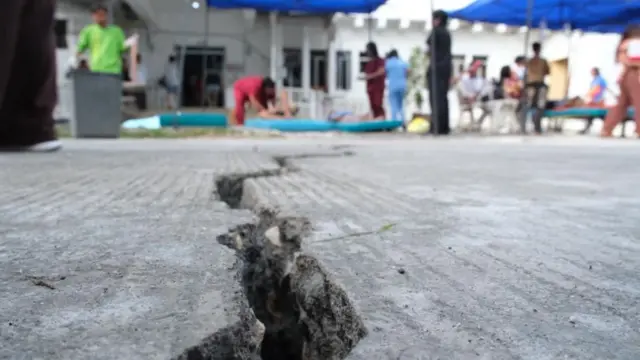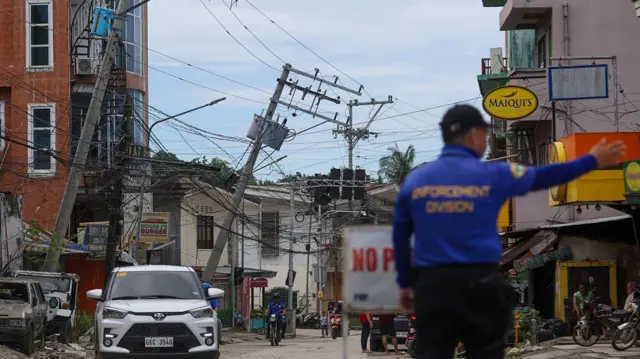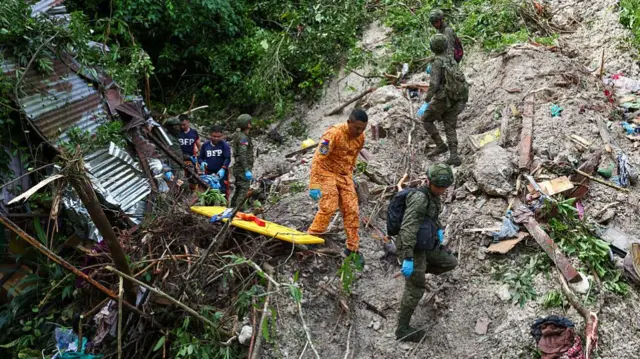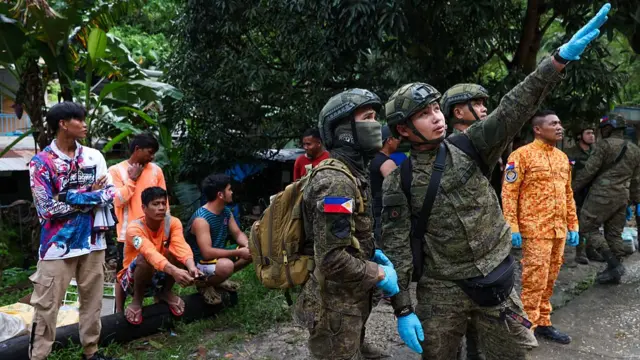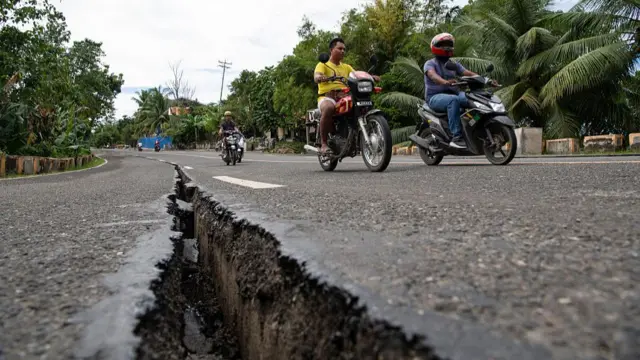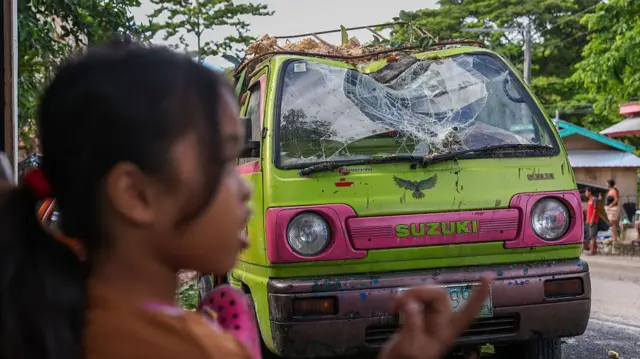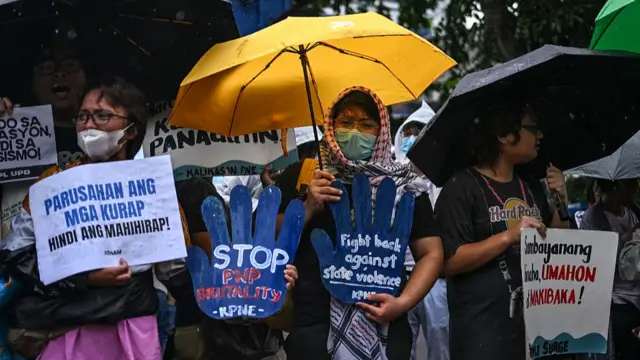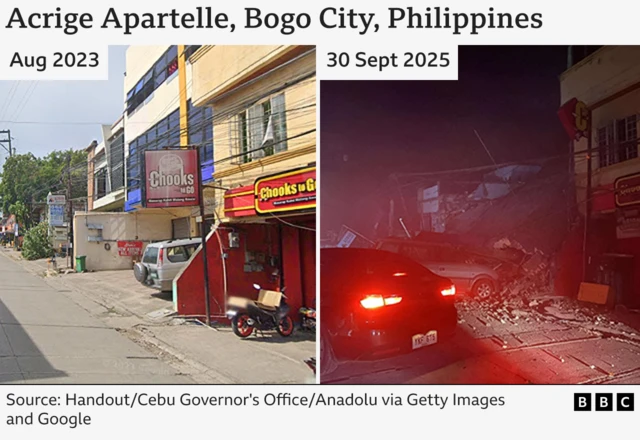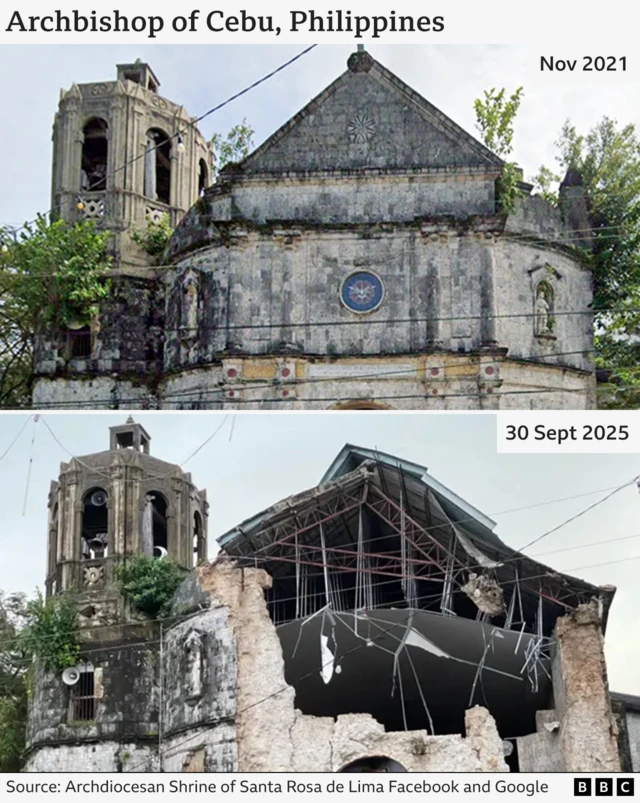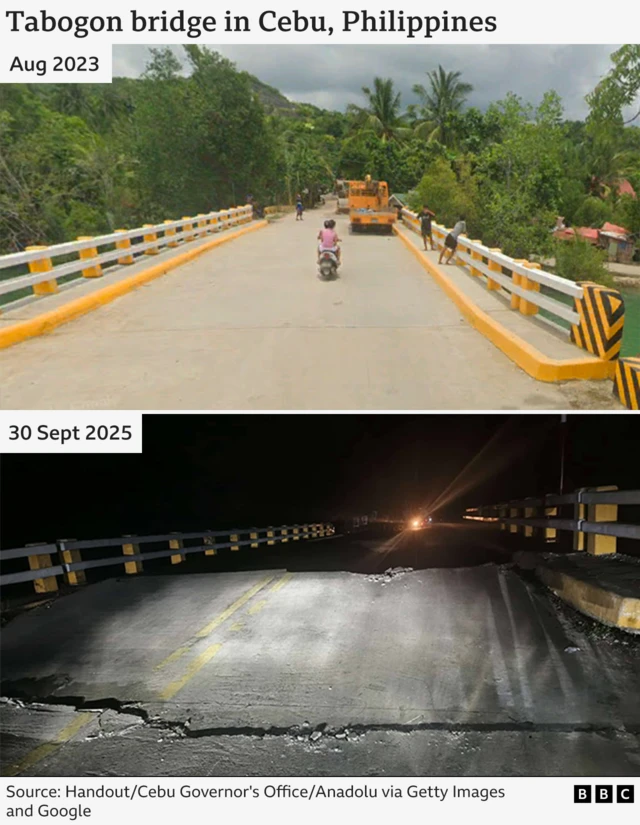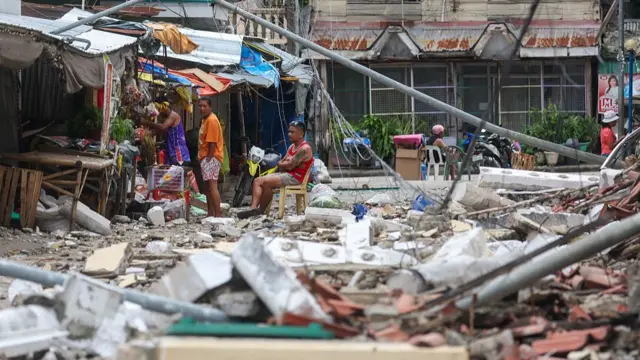A recap of the Philippines earthquakepublished at 10:24 BST 1 October
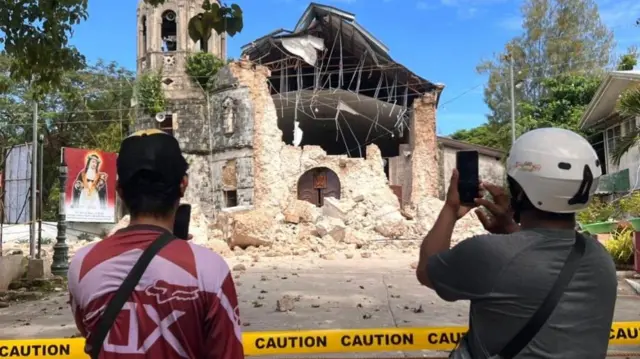 Image source, EPA
Image source, EPAPeople take pictures of a damaged church in Bogo city. Cebu houses some of the country's oldest churches
It's 17:00 in the Philippines and about 19 hours (reference to 10pm tuesday when quake truck) since a magnitude 6.9 earthquake hit off the north-east coast of Cebu island.
Here's what we have been reporting:
- At least 69 people have been killed and hundreds injured, according to officials
- Houses and old churches have collapsed, bridges cracked and vehicles crushed as rescuers are racing to find survivors still trapped under rubble
- Many residents are staying outside their homes as aftershocks are still happening. Those wounded from the quake as well as other patients are being treated outside hospital buildings
- Cebu's provincial government has declared a state of calamity and are rushing to deliver aid to those affected. The military has deployed army and air force troops to support relief efforts
- This earthquake comes barely over a week after back-to-back typhoons killed over a dozen people and an extraordinarily wet monsoon season caused widespread flooding, sparking anger and protests
We are pausing our live coverage for now. Read the full story here.
